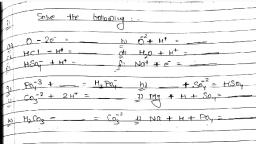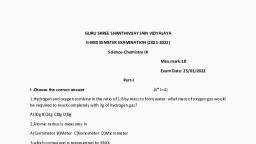Question 3 :
The mass of one steel screw is 4.11g. Find the mass of one mole of these steel screws. Compare this value with the mass of the Earth ($5.98\times 10^{24}$). Which one of the two is heavier and by how many times?
Question 4 :
What is the SI prefix for $10^{-2}$ multiples and submultiples of a unit?
Question 7 :
Give the formulae of the compounds formed from calcium and fluorine.
Question 10 :
A sample of ethane ($C_2H_6$) gas has the same mass as $1.5\times 10^{20}$ molecules of methane ($CH_4$). How many $C_2H_6$ molecules does the sample of gas contain?
Question 22 :
A 0.24 g sample of compound of oxygen and boron was found by analysis to contain 0.096 g of boron and 0.144 g of oxygen. Calculate the percentage composition of the compound by weight.
Question 25 :
Give the formulae of the compounds formed from sodium and oxygen.
Question 27 :
What is the SI prefix for $10^{-12}$ multiples and submultiples of a unit?
Question 29 :
If one mole of carbon atom weighs 12 g, what is the mass (in gram) of 1 atom of carbon?
Question 33 :
Compute the ratio by mass of the combining elements for Ammonia.
Question 37 :
Which of the following statements is not true about an atom?
Question 39 :
Which postulate of Dalton’s atomic theory is a result of the law of conservation of mass?
Question 42 :
The visible universe is estimated to contain $10^{22}$ stars. How many moles of stars are present in the visible universe?
Question 44 :
Calculate the number of molecules of sulphur ($S_8$) present in 16 g of solid sulphur.
Question 46 :
3.42 g of sucrose are dissolved in 18g of water in a beaker. The number of oxygen atoms in the solution are _____.
Question 48 :
Give the formulae of the compounds formed from carbon and chlorine.
Question 50 :
When 3.0 g of carbon is burnt in 8.0 g of oxygen, 11.00 g of carbon dioxide is produced. What mass of carbon dioxide will be formed when 3.00 g of carbon is burnt in 50.0 g of oxygen?

























